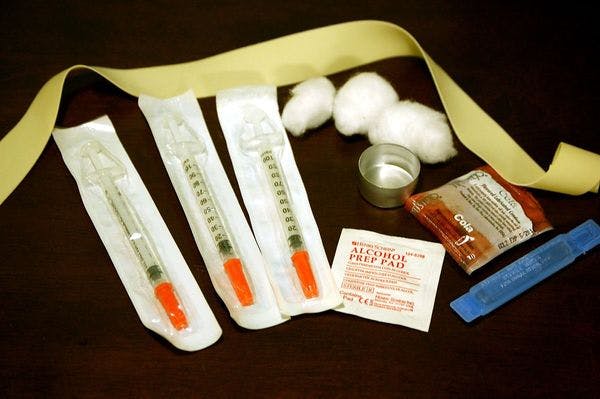Needle exchange programme Wikipedia
Shooting up: Infections among people who inject drugs in the UK, 2018
By Maciej Czachorowski, Juliana Coelho and others
Drug use in the United Kingdom (UK) is among the highest reported in Western Europe (1). In 2018-19, around 3.2 million (9.4%) 16-59 year olds in England and Wales reported using a drug in the last year (2). Current proportions are substantially lower than in the 1990s, but have changed very little in the last 10 years. The Scottish Crime and Justice Survey (2017-18) estimated 7.4% of 16-59 year olds reported using a drug in the past 12 months, an increase from 6.0% in 2014-15 but unchanged since 2008-09 (3). The estimated number of people who use opiate and/or crack cocaine aged 15-64 in England in 2016/17 was 313,971 (95% confidence interval (CI): 309,242-327,196). Within this group, there are an estimated 261,294 people (95% CI: 259,018- 271,403) who use opiates and an estimated 180,748 people (95% CI: 176,583-188,066) who use crack cocaine. The number of people who inject drugs (PWID) in England was last estimated in 2011 at 103,185 (95% CI: 100,085-107,544) (4). Work is ongoing to provide an up-to-date estimate of the number of PWID, with results expected in late 2020.
There were 192,603 individuals in treatment for drug use in England in 2017-18; 141,189 for opiate use and 51,414 for non-opiate use. Of those who newly presented to treatment for opiate use, 26% were currently injecting and 34% had previously injected drugs. Of those newly presenting to treatment for non-opiate use, 2% were currently injecting and 7% had previously injected drugs (5). Drug services across the UK are treating an ageing cohort of PWID (6-9). There are additional challenges associated with the complex and varied needs of older PWID, and additional risk factors, including for infections, that are compounded by a long history of drug use and/or injection.
PWID are vulnerable to a wide range of blood borne viral (BBV) and bacterial infections, which can result in high levels of morbidity and mortality. HIV, hepatitis B (HBV) virus and hepatitis C virus (HCV) are effectively transmitted through the sharing of injecting equipment, such as needles and syringes. Unsterile injection practices are also associated with bacterial infections such as Staphylococcus aureus and Group A streptococci (GAS), which are often worsened by poor wound care and delays in seeking healthcare. PWID are at risk of rare but life-threatening infections with sporeforming bacteria such as tetanus, botulism and anthrax which can be associated with contaminated drugs. Public health surveillance of infectious diseases, and the associated risk and protective behaviours among PWID, provides important information to understand the extent of these infections, the risk factors for their acquisition and for monitoring the effectiveness of prevention measures.
The UK has committed to the World Health Assembly’s Global Health Sector Strategy on Viral Hepatitis which aims to eliminate viral hepatitis as a major public health threat by 2030 and introduces the first ever global targets for viral hepatitis (10). In order to Shooting Up: An update, December 2019 9 achieve these targets, it is essential for us to monitor hepatitis B and C, and risk and protective behaviours among PWID.
